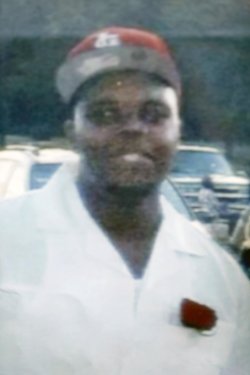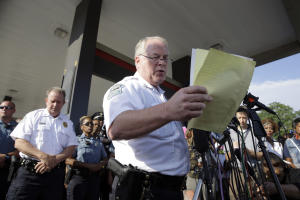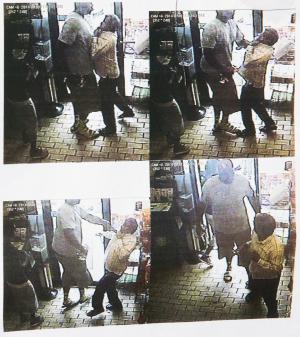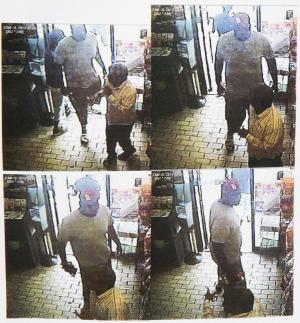In June, 1966, Stokely Carmichael, the twenty-four-year-old chairman of the Student Nonviolent Coordinating Committee, was arrested in Greenwood, Mississippi, for his participation in the March Against Fear, which travelled across the state. The march had been started ten days earlier by James Meredith, who had integrated the University of Mississippi, but he was wounded by a sniper on the second day, and civil-rights figures pledged to complete it on his behalf. After Carmichael was released from jail, he vented his frustration to the crowd. “This is the twenty-seventh time that I have been arrested,” he shouted. “I ain’t going to jail no more.” He concluded that nonviolent direct action had reached its productive limits.“Everybody owns our own neighborhoods except us,” he said. “We want Black Power.”
The term, as amorphous as it was radically indignant, heralded a shift in the movement’s orientation. It called for an insular black political empowerment, in contrast to the prevailing civil-rights ideal of interracial coöperation. “Before a group can enter the open society,” Carmichael and the political scientist Charles V. Hamilton wrote, the following year, “it must first close ranks.” Between 1964 and 1967, riots erupted across the nation—in Harlem, Watts, Detroit, Cleveland, and Newark. The Kerner Commission, convened by President Lyndon B. Johnson, concluded that the systemic exclusion of blacks from opportunity was at the root of the uprisings. Many of the figures in the nascent movement were apostate pacifists who had been baptized in activism under the auspices of Martin Luther King, Jr. They recognized violence as the predictable yield of the conditions in black America, referred to as “internal colonialism,” and they saw black self-determination as the most viable solution. Malcolm X said that the racial concerns of the United States would be resolved by either the ballot or the bullet.
For the past two weeks, the images emerging from Ferguson, Missouri, have seemed like a tableau of sixties history. The shooting death of Michael Brown, an unarmed black eighteen-year-old, at the hands of a police officer sparked protests that teetered between precarious peacefulness and furious confrontation, spilling over into sporadic looting and vandalism. One night during the first week, as heavily armed police lobbed cannisters of tear gas and fired rubber bullets into the crowd, a local activist said that the scene reminded him of Birmingham in 1963, minus the fire hoses. Brown’s death and the police department’s abrasive handling of the case ignited tensions that extended far beyond a single case of alleged excessive force.
The city of Ferguson, which is sixty-seven per cent black, has never had a black mayor, and five of its six city-council members are white. Only three of its fifty-three police officers are black. These are the kinds of disparities that the Black Power movement set out to eliminate nationally. But today few African-Americans engage in the political process in Ferguson. Maria Chappelle-Nadal, a state senator whose district includes Ferguson, points to poverty, the youth of the population, and high levels of transience as being among the reasons. Some also cite districting and other local electoral particularities as factors. It’s obvious that Ferguson’s black population is far underrepresented politically, less apparent that it is more likely to be poor. The issue is as much class as it is race.
Country Club Hills is a smaller neighboring city that has a similar demographic history, as a suburb that transitioned from mostly white to majority black—in this case, ninety per cent. It has a black mayor, David Powell, a black police chief, Clifton Ware, and a city council that is three-quarters African-American. Powell and Ware have worked for the past six years to transform a department that was nearly ninety per cent white to one that is evenly represented by black and white officers—an initiative they saw as essential to better community policing.
Since 1970, the number of black elected officials in the United States has increased nearly tenfold. The election of black mayors in Gary, Cleveland, Detroit, Newark, and Atlanta was directly tied to the Black Power movement. When Barack Obama was elected President, in 2008, it was impossible to overlook the ties between his victory and those of the civil-rights era. Far fewer recognized his debt to the slow but consistent accretion of African-American political offices that self-determination had inaugurated. Such were the movement’s successes that we no longer think of its goals as particularly radical. The Congressional Black Caucus is now simply one political bloc among many in the legislature. Our modern ideals of diversity and inclusion are the more sociable descendants of the movement’s emphasis upon representation in what was once referred to as “the power structure.”
Yet it’s more useful to think of Ferguson as a microcosm, or even a precursor, than as an outlier. Defending the city from the onslaught of negative publicity, Brian Fletcher, a former mayor, assured reporters that there was nothing particularly hostile or unique about it. “What happened here could’ve happened anywhere,” he said. Indeed, that is the concern. In the wake of Shelby County v. Holder, the Supreme Court’s 2013 evisceration of the Voting Rights Act, voters in fifteen states may face new restrictions in the midterm elections, many of which might curtail African-American electoral participation. Felon-disfranchisement laws have removed a class of citizens from the electoral equation, and the titanic sums of money in politics create a drastic disadvantage for poor communities.The kind of nearly monochromatic politics that typifies Ferguson isn’t necessary to warrant significant concern. Engineering a smaller black vote in Ohio or Florida during a crucial election would be enough to conjure bad memories.
In March, 1968, in a campaign speech, Richard Nixon endorsed Black Power, which he conveniently redefined as black entrepreneurship. What most of the militants were asking for, he said a month later, was simply to be included “as owners, as entrepreneurs—to have a share of the wealth and a piece of the action.” Militants saw the move as the ultimate sign that they had been coöpted. But Nixon’s endorsement had less to do with a desire to subsume the movement than with a calculation that violence was a bigger threat than inclusion. Better to bring talented young people like Carmichael into the system rather than have them hurling stones from the periphery. The death of an unarmed young man in a hail of police bullets is only part of the reason that Ferguson exploded last week. The other part is that the crowds that gathered in the streets saw little of themselves in the city’s political structure and had even less faith that those structures would deliver justice. Ballots triumphed over bullets half a century ago. The scenes that played out in Ferguson were a reminder that the absence of the former increases the likelihood of the latter. ♦



















